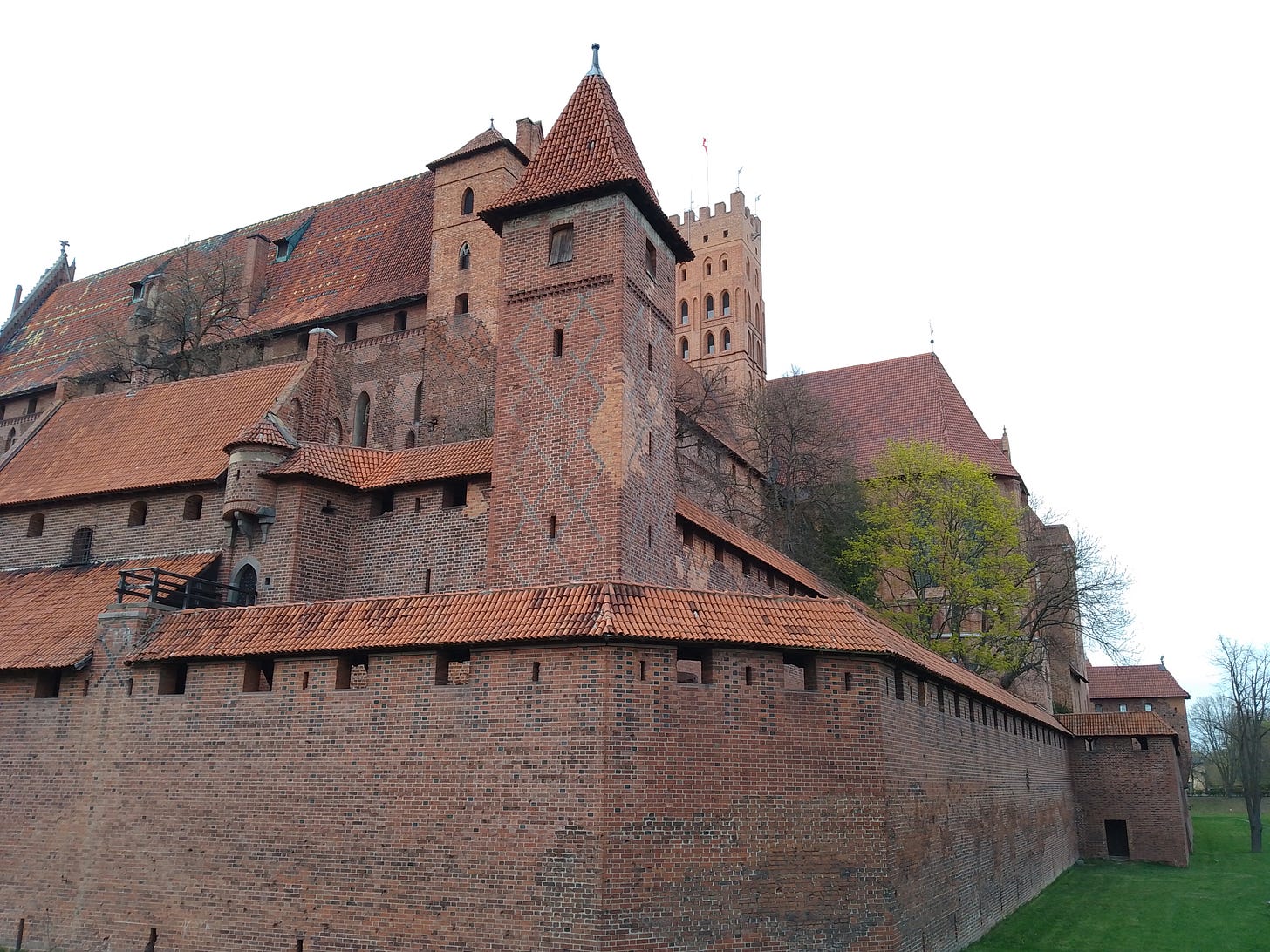If you want to see the world’s largest castle, you have to go to the small town of Malbork, in northern Poland. At 18 hectares (almost two million square feet), it is enormous. But despite its location in Poland, it’s not a Polish castle.
The Order of Brothers of the German House of Saint Mary in Jerusalem (better known as the Teutonic Knights) was founded in the 12th century to build hospitals and assist Christian pilgrims on their way to Jerusalem. But in a serious case of mission creep, the Teutonic Knights ended up building an empire on the shores of the Baltic Sea hundreds of miles northwest of Jerusalem. The Crusades are synonymous with battles between Christian and Muslim armies, but the Crusades also included attempts to defeat pagan kingdoms in northern Europe.
While the stated goal of the Teutonic Knights was to convert pagans to Christianity by force, it’s clear that this overtly violent M.O. was just a general excuse for war, given that they fought against both the (pagan) Grand Duchy of Lithuania and the (already Catholic) Kingdom of Poland. The only Lithuanians I’m aware of that converted to Catholicism at that time did so as part of marriages with Polish royals intended to create an alliance to fight the Teutonic Knights.
Poland would end up taking the castle from the Teutonic Knights, but not by force. After learning that the Bohemian mercenaries guarding the castle hadn’t been paid by the Teutonic Knights, Poland offered to pay them, and the mercenaries gladly handed the castle over.
In many ways, visiting Malbork Castle is a refreshing change from other castles in Europe. When I think of a castle, I think of a mighty medieval fortress protected by knights on horseback. But most of the castles I’ve visited so far were built later or were (relatively) recently home to royalty, and this gives them a much different feel. They’re less The Lord of the Rings and more Disney princess movie. “Disney princess” castles are still lovely to visit, but they feel less like military installations and more like places where aristocrats in fancy clothes and powdered wigs would go to dance.
Malbork Castle, on the other hand, still feels like it is ready to withstand a siege. In order to seize the castle, attackers would have to break through several iron gates and make their way over a water-filled moat and a dry moat, fighting through the Outer Bailey and the Middle Castle just to get to the High Castle. If they got into the High Castle, they would then have to capture a tower that functioned as a redoubt of last resort.
But castles did double duty as defensive structures and centers of communities, and well preserved interiors take you to grand halls for banquets and practical spaces like kitchens (and a few medieval bathrooms), along with small museums on Baltic amber, arms and armor, stained glass and other subjects. Even with an audioguide that tells you where to go, I still got turned around a few times.
The town of Malbork is small, but Malbork Castle is a worthy destination in its own right, and is accessible as a day trip from Gdańsk or (as I did) en route between Warsaw and Gdańsk, which offers good views of the castle from the train.






